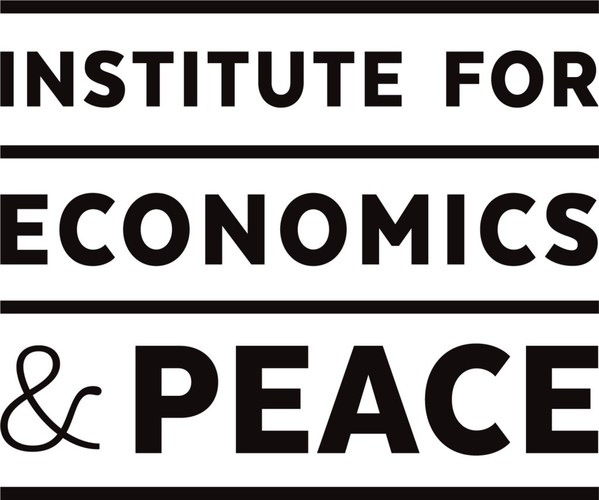 |
- Deaths caused by terrorism increased by 22% to 8,352, the highest level since 2017.
- Attacks are more deadly as the number of terrorist incidents fell by 22% to 3,350, and number of countries reporting an incident fell to 50.
- In 2023, the US accounted for 76% of terrorism-related deaths in Western democracies, amid a 15-year low in incidents.
- The epicenter of terrorism has shifted out of the Middle East and into the Central Sahel region of sub-Saharan Africa, which now accounts for over half of all deaths from terrorism.
- Burkina Faso suffered the worst impact from terrorism, with deaths increasing by 68% despite attacks decreasing by 17%.
- Iraq recorded the largest improvement in the last decade with deaths from terrorism falling by 99% since the 2007 peak, to 69 in 2023.
- The impact of terrorism has become increasingly concentrated, with ten countries accounting for 87% of total terrorism-related deaths.
- Over 90% of terrorist attacks and 98% of terrorism deaths in 2023 occurred in conflict zones, underscoring the strong link between conflict and terrorism.
LONDON, Feb. 29, 2024 /PRNewswire/ -- Despite the Hamas attacks of October 7th, the number of terrorist incidents fell in the Middle East, along with North Africa, Europe and North America. The central Sahel region has conclusively overtaken the Middle East as terrorism's epicentre with Islamic State (IS) and Jamaat Nusrat Al-Islam wal Muslimeen (JNIM), a franchise of Al-Qaeda, being the most active terrorist organisations.
The Global Terrorism Index 2024 (GTI) highlights that terrorism remains a serious global threat, with total deaths from terrorism increasing by 22% to 8,352 in 2023, now at their highest since 2017. Even when excluding the October 7th attacks, deaths would still have increased by 5%. This is despite terrorist incidents decreasing by 22% to 3,350, resulting in a 56% increase in the average number of people killed per attack. This is the worst rate in almost ten years.
The GTI is produced by the leading international think tank the Institute for Economics & Peace (IEP) and has been published annually for the last eleven years. It is the most comprehensive resource on global terrorism trends and uses multiple factors to calculate its score, including the number of incidences, fatalities, injuries and hostages, and combines it with conflict and socio-economic data to provide a holistic picture of terrorism.
Terrorism is becoming more concentrated with the number of countries recording a death from terrorism falling to 41, considerably lower than the peak of 57 countries recorded in 2015 and the 44 countries in 2022.
Burkina Faso suffered the worst impact from terrorism in 2023, with deaths increasing by 68% despite attacks decreasing by 17%. Terrorism in the country has deteriorated every year since 2014. Neighbouring Mali and Niger were also deeply impacted in 2023.
Pakistan recorded the most incidents of any country, with 490 attacks that resulted in 689 deaths. This is the fourth successive year where both deaths and incidents have increased in the country. Iraq recorded the largest improvement in the last decade with deaths from terrorism falling by 99% since its peak in 2007, to 69 in 2023.
The deadliest terrorist incident in 2023 was the October 7th Hamas-led attack in Israel which killed 1,200 people. Its consequences are still unfolding, with more than 30,000 Palestinians killed from Israel's military operation by mid-February 2024.
Terrorism is not the deadliest form of violence in the world. Armed conflict results in nine times more fatalities than terrorism, homicide over 45 times more, and deaths from suicide 72 times higher. However, terrorism has a uniquely disturbing psychological and social impact intended to traumatize the whole of society, rather than the individual.
Steve Killelea, Founder & Executive Chairman, IEP:
"The last twelve months resulted in the most lives lost to terrorism than in any period since 2017. Conflict remains the primary driver of terrorism, yet most wars in the 21st century have been unwinnable and very costly. Terrorism also thrives in areas of political instability; it is imperative that current political tensions and minor conflicts do not escalate and that current conflicts are resolved, otherwise further increases in terrorism are likely.
Globally, we have seen real gains in recent years in our fight against terrorism, particularly in Western democracies. However, left unchecked regional instabilities could fan the flames of a new wave of terrorism. It is therefore important that global policymakers focus international efforts to address the current global conflicts and prevent the Gaza conflict from spreading".
Terrorism in Western Democracies
Terrorism incidents in Western democracies recorded a drop of 55% compared to the previous year. There were 23 attacks that resulted in 21 fatalities, marking a 15-year low. However, the US recorded 76% of these fatalities from seven attacks. Five of these attacks were linked to individuals with far-right beliefs yet none had an affiliation with a far-right group. Religiously motivated terrorism has dropped significantly.
In OECD countries, many of which are Western democracies, socio-economic factors such as youth unemployment, military expenditure, lack of confidence in the press and lower inequality-adjusted life expectancy correlate significantly with the GTI.
Regional instability in the Middle East
Tensions between Palestine and Israel prior to the conflict were at an all-time high and the security situation in Israel had been deteriorating. Over 2,500 instances of communal violence in Israel and Palestine were recorded in the first ten months of 2023, compared to less than 500 in 2016.
Neighbouring countries are experiencing a spillover effect, increasing regional instability. If major hostilities were to break out, terrorist activity would most likely increase substantially. Egypt, Jordan, Lebanon, Iran, Iraq, Syria, and Yemen could all be drawn into the conflict.
The risk of conflict between Hezbollah and Israel has substantially increased. Since October 7th, there have been 630 attacks between the two groups. Hezbollah currently has over 100,000 fighters, with a rocket stockpile estimated at between 100,000 and 150,000.
Regional impact & improvements
Sub-Saharan Africa, the Middle East and North Africa (MENA), and South Asia accounted for 94% of deaths from terrorism in 2023, with sub-Saharan Africa alone accounting for just under 59% of all fatalities. The Sahel accounts for almost half of all deaths from terrorism globally. The impact of terrorism has been falling in MENA since its 2016 peak, with deaths down 66% and incidents by 72%.
Terrorism & Organised Crime in the Sahel region
Organised crime and terrorism have merged in the Sahel with groups forming complex alliances and fuelling the persistence of terrorist activities in the region. Terrorist organisations sometimes integrate with organised crime groups or provide protection and safe passage for illicit trade in drugs, human trafficking and precious metals. The region has seen a surge of kidnapping since 2017, with incidents increasing from 78 to over 1,000 in 2023 and generating significant revenues for terrorist organisations.
Increased attribution to Terrorist Groups
Of the 3,350 terrorist attacks recorded in 2023, 54% were attributed to a group. IS and its affiliates remained the world's deadliest terrorist group, responsible for 1,636 deaths, despite its attributed deaths falling by 17%. IS was followed by Hamas, JNIM, and Al-Shabaab. Together, they were responsible for over 75% of terrorism-related deaths globally. A decade ago, they were responsible for less than 25%.
In 2023, IS attacks occurred in six of the nine GTI regions: Asia-Pacific, Europe, MENA, sub-Saharan Africa, Russia and Eurasia and South Asia. In the Middle East, Syria was the country most affected by IS attacks. It recorded 224 attacks, an increase from 152 in 2022, and a quarter of all IS related deaths.
Using machine learning techniques, researchers were able to attribute an additional 15,000 deaths to IS since 2007, increasing the total number of attributed deaths from 25,000 to 40,000.
The full GTI 2024 report and interactive map are available at: visionofhumanity.org
Twitter: @GlobPeaceIndex
Facebook: facebook.com/globalpeaceindex
Global Terrorism Index (GTI)
The GTI by the Institute for Economics & Peace provides a comprehensive summary of the key global trends and patterns in terrorism over the last 15 years. The report ranks 163 countries (99.7 % of the world's population) according to the impact of terrorism. The GTI report is produced using data from TerrorismTracker and other sources. TerrorismTracker provides event records on terrorist attacks since 1 January 2007. The dataset contains over 65,000 terrorist incidents for the period 2007 to 2022.
Institute for Economics & Peace
The Institute for Economics & Peace (IEP) is the world's leading think tank dedicated to developing metrics to analyse peace and to quantify its economic value. It does this by developing global and national indices, including the annual Global Peace Index, calculating the economic cost of violence and understanding Positive Peace which is the attitudes, institutions and structures that create and sustain peaceful societies.
source: Institute for Economics & Peace
第九屆「傳媒轉型大獎」請投etnet經濟通一票! ► 立即行動































